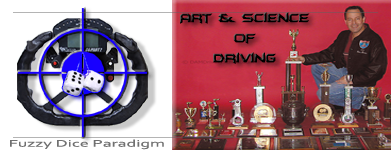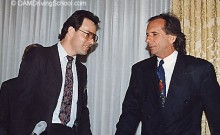BLOG UPDATED 5/29/24 –> paddle shifters, drive-by-wire, team wheels for endurance racing, Fernando Alonso prank: At the bottom, you’ll see a link to read an interesting take on IndyCar’s speed from across the Pond from the highly respected Racecar Engineering magazine; written April 25, 2012.
Racecar Engineering magazine’s Editor, Andrew Cotton, highlights Indy’s charm quite nicely…albeit through the back door.
IndyCar’s formula is more about letting the cars dance predictably on top of the track surface — with less downforce — so the drivers are more “in the loop” and have greater influence in the final result compared with F1’s engineering prowess thanks to deeper budgets.
Notwithstanding its cost-saving “spec series” formula, IndyCars are more raw. There’s NO POWER STEERING which means driver fitness is paramount.
IndyCar’s steering feel is unique due to the purity of the connection between the forces the drivers feel through their hands and what’s going on at the contact patches.
This higher-resolution feedback signal — thanks to an improved signal-to-noise ratio from a relaxed grip on the wheel and staying in the proprioceptive “sweetspot” longer — means the IndyCars can be predictably unstuck from the track surface…so long as aero is sorted, of course.
With the IndyCars cars now dancing on top of the surface in a consist fashion, the enjoyment for both drivers and audiences skyrockets.
By comparison, F1 cars represent a more highly refined engineering exercise with fewer boundaries (thank you, freer rules).
So, while there’s no doubt these engineering marvels are incredible to watch, the run-away price paid for a spot on the podium is nearly cost-prohibitive for all but 3 or 4 organizations…still, they’re awesome to watch.
Since the F1 cars have much greater downforce, cornering speeds are greater, and the steering resistance soars; hence, their power-assisted steering solution. This relatively complicated solution compels drivers to adapt to what they are given: generic, non-molded smooth grips.
Conversely, IndyCar’s simpler molded grip solution mean drivers can adapt the Human-Machine Interface further to their liking over and over until it’s perfect. In addition, there are fewer moving parts to fail with a simple prismatic pairing of shaft/rack.
Unfortunately, not all grips used today in IndyCar are RE-moldable like the original PersonaGrips.
So, the designs are kept “loose” to avoid unforeseen grip interference patterns that reveal during use on the track. This results in a less-than-optimal design. During my presentations at steering conferences a decade ago in Berlin, Dusseldorf, and Ann Arbor, MI, I warned teams against using NON-remoldable materials like expanding foam or 2-part resins, and suggested using generically molded grips which are popular in endurance racing where multiple drivers race the car.
Interestingly, Fernando Alonso pranked me on pit road at Indy after remolding Ser.#414 five times to get it perfect. Moments after stopping during a testing session, he furiously jumped out of the car, ran up to me with his finger pointed at my noise, and waited to he got to me to yell out, “Don’t touch it! It’s perfect.”…the whole McLaren team laughed since they saw how hard we worked to dial in the grips over two days. My response to that prank is not fit for print, but he smiled back knowing he caught me off guard. Fun times, indeed.
To see Fernando molding his grips, we appear at the 27-minute mark in Season 1/Episode 2 called Lost for Words (opens in new tab): https://www.amazon.com/Fernado-Season-1/dp/B08JLM1NYK
Early electro-hydraulic power-assist units in F1 incorporated deformable shaft bushings to detect driver requests. Those systems nearly eliminated any hysteresis on the steering feedback signal, and provided a fail-safe alternative to today’s drive-by-wire systems. Still, engineers still had to be careful not to mask the feedback signal with over assist. Today’s drive-by-wire systems allow myriad variables which further isolates drivers from the intimate feel for how the rubber molecules interact with the track’s surface.
Of course, the added weight and complexity of these drive-by-wire assist systems add multiple failure points, but that’s an accepted part of the engineered solution. Drive-by-wire systems can also limit steering kickback forces; however, the transition from allowing feedback forces to remain linear while kickback forces are filtered requires a cut-off rather than a logarithmic tapering off.
Unfortunately, when a steering system failure does occur, depending on where it happens in the loop, the F1 ground effect’s higher cornering speeds mean their smooth grips are not up to the higher-effort task, and the yoke’s hand entrapment — along with an adrenaline dump — represents their only hope for saving it…so long as the power assist cut-off point is not reached. And, if the failure occurs outside of the fail-safe redundancy built into the system, drivers are merely along for the ride without a mechanical connection…scary, to say the least; just like the walls in IndyCar that scare F1 drivers.
Regardless, to fall in the sweetspot where driver-fatigue resistance meets optimizing the steering’s feedback signal for 3-hr stints, steering resistance gets throttled back to about half the original effort. Interestingly, PesonaGrip’s grip force reduction for linear force was EMG-tested at NIOSH, and was shown to reduce effort by 54%…hmmm.
With over-assisted systems, drivers must resort to using the smaller muscles located further from the body’s core if they expect to read any steering feedback.
When fingers and wrists become the primary movers, to salvage any feedback at various speeds and steering angles, steering gain (ratio) becomes a high-value variable. When designed with high ratios, the steering apparatus can become a two-handed yoke with full lock-to-lock available using a fixed hand grip method.
Cutting off the top of the wheel adds visibility, so drivers can sit lower. By also cutting off the bottom of the wheel, an increase in leg-room results. With this less-than-ergonomic compromised seating position — in the interest of a lower CG — formula drivers NEED some form of power assist whether it’s with properly molded grips or drive-by-wire.
But, let’s face it…yokes look trick. However, it comes at a price…
While this approach works well on paper, in reality the Internet is filled with many examples where drivers using steering yokes instinctively reached for a non-existent “wheel” during a tank-slapper. Result?…Crashes.
Regardless, those steering yokes look fantastic, and the grips can be optimized tighter since the hands are basically captured and merely pronate across the surface during lock-to-lock motion. Granted, video analysis remains critical if optimal grip design ranks high in the pursuit of detecting the top of the mu-slip curve and lowering lap times.
Lastly, since paddle shifting is used in both series today, the drivers’ opposite non-shifting hand works harder since an open hand cannot impart any significant turning force. This means a much tighter grip design is required to avoid premature fatigue. So, in the end, remoldable grips are still needed to extract that last bit of traction from the front end without electro-mechanical power assist.

